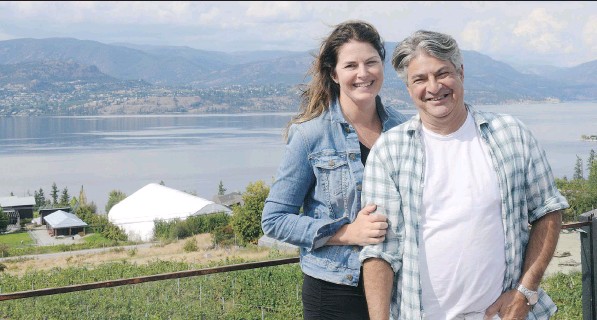Langley townhomes close to transit, shopping
Simon Briault
The Vancouver Sun
Woodland Park
Project location: 8570 204th Street, Langley
Project size: 106 townhomes with two, three and four bedrooms; 1,263 — 1,825 square feet; priced from the $400,000s
Developer: Infinity Properties
Architect: RCA – Robert Ciccozzi Architecture
Interior designer: Gannon Ross Designs
Sales centre: #1 — 8670 204th Street
Hours: noon — 5 p.m., Sat — Thurs
Telephone: 604-532-6060
Website: http://www.infinityproperties.ca/projects/woodland-park/overview/
Occupancy: summer 2016 – summer 2017
Units at the new Woodland Park townhome development in Langley have been selling robustly and Tim Bontkes, owner of developer Infinity Properties, believes location is a big reason why.
“We’ve already sold the first four of our five releases, which was unexpected and wasn’t exactly our plan,” he said. “But we had people lining up for hours in the rain and I wanted to offer them a home to buy. People were still coming in and making buying decisions at 9.30 at night.”
“It’s not just the market hype that’s going on in Metro Vancouver right now,” Bontkes added. “I think people are very excited about the location.”
Woodland Park is just south of the Trans Canada Highway, close to the Yorkson Creek trail system and within walking distance of shops and amenities. Major commuter and transit routes are within easy reach. This includes the Carvolth Exchange, a large bus loop and park and ride facility serving the northern part of Langley.
It’s a neighbourhood that Jennifer Calbick, who has bought a Woodland Park home with her husband, knows well.
“My husband and I are renting a condo in the same neighbourhood,” she said. “We were looking for a bigger place because we just got married and are planning to start a family in the next two years or so.”
“We were familiar with Infinity because they had previously built a row of townhouses in our neighbourhood that we really liked, although we weren’t in a position to buy at that point,” Calbick added. “We have family that live close by and we like that it’s in a quieter spot, but still within walking distance to the shops.”
But according to Bontkes, it’s not just location that’s driving sales at Woodland Park. He believes that the townhome format is surging in popularity, so much so that “townhomes have become the new single-family [home].”
“The price gap between condos and single-family housing is really driving the interest in townhomes right now,” said Bontkes. “On top of that, downsizers definitely don’t want to have to worry about the upkeep involved in a single-family home. And even young families these days are often so busy they really appreciate a situation where that stuff is all taken care of. I think the attitudes of that demographic have definitely changed.”
“Typically, our buyers are more attentive than they used to be,” Bontkes added. “First-time buyers tend to be a little less picky, but the move-up buyers and the downsizers especially are looking very carefully at what they’re getting. That means the specifications we use and the fit and feel of the site itself in terms of things like walkability, open spaces and parking, are becoming extremely important.”
Bontkes was keen to point out that Woodland Park homes are all supplied with gas, allowing for gas-powered appliances and furnaces that provide forced-air heating, an important feature for many buyers who are downsizing from single-family homes.
Kitchens at Woodland Park feature stainless steel appliances by Whirlpool, including five-burner gas ranges and convection ovens, refrigerators with bottom-mount freezer drawers and dishwashers with ProWash Cycles. There are Venmar chimney-style stainless steel range hoods, polished quartz countertops and tile backsplashes.
The bathrooms have tiled floors and bath/shower surrounds, tempered glass shower doors and single-lever, polished chrome faucets and shower heads by Grohe. There are also under-mount or drop-in sinks, high-efficiency elongated toilets by Sterling and (in select homes) main-floor powder rooms. All homes have nine-foot-high ceilings on the main floors, laminate wood flooring and flat-stock wood baseboards and door casings.
Infinity has already sold 87 out of a total of 106 homes at Woodland Park and Bontkes said that the strong market allowed them to provide buyers with flexibility in their purchasing decisions.
“In a slow market, developers will often not take the risk of selling homes at the end of their site in case the market slows down,” he explained. “You might want to hold off on those units. But because the market is so strong right now, we were able to release homes throughout our site. That means people can get every type of unit with a choice of move-in dates, depending on their situation. People really appreciated that flexibility.”
Bontkes said that the breakdown of buyers so far has been approximately 50 per cent first-time buyers, 45 per cent downsizers or upgraders and five per cent investors.
“This was the first development we were really serious about and we were happy to get in,” said Calbick. “We’ll be moving in June 2017 and we’re super excited to start making the place our own.”
The last phase of Woodland Park homes will be going on sale soon, with prices between the low $400,000s and the high $600,000s. Final completion is scheduled for August 2017.
© Copyright (c) The Vancouver Sun


